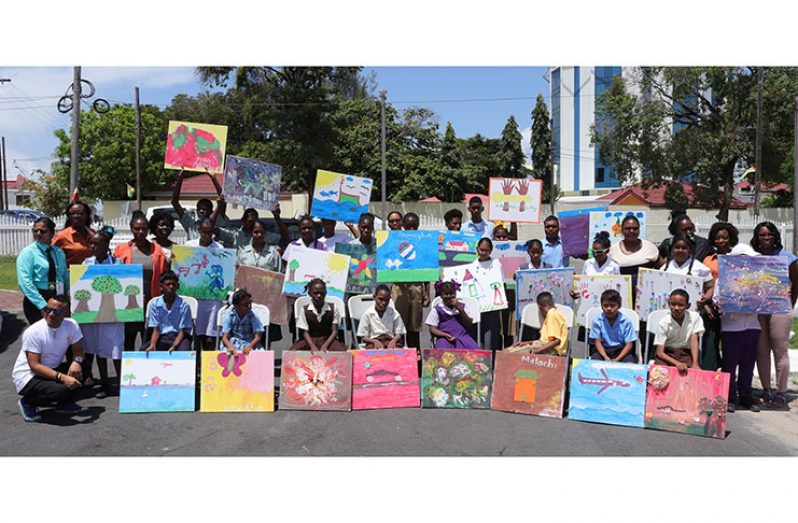“TO draw, you must close your eyes and sing.” Pablo Picasso.
THIS quote resonated with me after I had the privilege of working with differently-abled students just over a week ago. On September 27, 2019, the Technical and Vocational Education and Training (TVET) Unit and the Special Education Needs (SEN) Unit of the Ministry of Education hosted a day of Visual Arts Expressions for students with disabilities. I worked along with three trained art teachers to facilitate the painting exercise. With the assistance of the teachers from the various institutions, which included the Unit for the Blind and Visually Impaired, Diamond Special Needs School, the Beterverwagting SEN Centre, Schoonord Learning Centre for Diverse Needs, Resource Unit for SEN Learners Linden, and the David Rose Special School, we worked with 29 students. I supervised the works of seven students, three of whom were blind and the remaining four had varying disabilities.
There was one student who has left a lasting impression on me. Her name is Angelisa and she is legally blind. Angelisa loves to sing and listen to music. Despite her inability to see, Angelisa was quite enthusiastic about completing the assigned task. I introduced her to the donkey easel by asking if she knew anything about horses or donkeys. She responded in the negative. Then it hit me she had never felt or seen a horse. Oh, the little things we take for granted! My task was harder than I had anticipated. I continued introduction of the materials by allowing her to feel each object, hoping she would be able to identify them. She felt the 50x60cm canvas and to my surprise, said it was small. As she felt the foam stickers, she was able to identify the letters quickly, but it was my job to identify the objects. As an artist, it’s hard for me to imagine myself drawing with my eyes closed, yet I expected these children to do it. Quite ironic.
While reflecting, I understood why there was some degree of panic when the teachers who accompanied the students, realised that it was a painting exercise. One teacher approached me and asked: “How do you expect the blind students to paint?” I responded with certainty: “they will paint.” I then explained that they would be using a collage technique to add texture to their paintings, thus including an element of touch. This was easier said than done. And the experience humbled me. I found myself saying: “you should see your work,” then being flooded with guilt because it seemed so insensitive. Angelisa just smiled. I guess she realised that this was a whole new experience for me. As an artist, my work isn’t complete until I say it is, and here I was looking at a blind child’s work and having the audacity to tell her when her painting was finished.
At one point I told Angelisa that her painting was complete. I then came up with what I thought was a brilliant idea. We would put her handprint on the painting. But my girl Angelisa wanted more. She wanted her signature on the painting. Like every other artist, her signature meant that she was the creator of the painting. She asked: “if I write my name with a pencil, will I feel it?” I naively responded “yes.” But after she wrote the first letter of her name, she realised that she couldn’t feel the letter. It was at that moment I realised how priceless the gift of sight is. I managed to redeem myself by using foam to cut the letters of her name and she pasted them on the canvas. After her name was placed on the canvas, I could tell by her reaction that she was satisfied, and so was I.
The day of Visual Arts Expression for the differently-abled was quite a rewarding experience for me. Differently-abled emphasises the fact that many people with disabilities are quite capable of accomplishing various tasks. However, their method may be different, and it may also take longer than people without disability. Types of disability include blindness, low vision, hearing impairment, locomotor disability, mental retardation and mental illness. The day of visual arts expression for the differently-abled was a brilliant initiative. I commend the team within the Ministry of Education for this activity.




.jpg)










